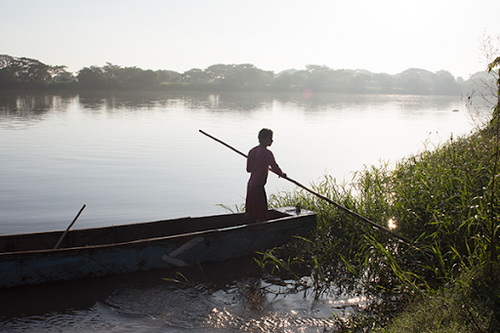
A new report from the University of Notre Dame’s Kroc Institute for International Peace Studies and its Peace Accords Matrix Barometer Initiative in Colombia presents the status of peace accord implementation as of November. The sixth year of implementation of the Colombian Final Accord was marked by minor variations in implementation levels.
The Kroc Institute’s seventh comprehensive report, “Six Years of Implementation of the Final Accord: Challenges and Opportunities in the New Political Phase,” analyzes the period between December 2021 and November 2022. Based on the monitoring of the 578 commitments contained in the Final Accord, the report includes a quantitative and qualitative analysis of the implementation of the accord and its gender and ethnic approaches. The report also presents a comparative analysis of the implementation of Comprehensive Peace Agreements and includes elements to consider in the development of the “Total Peace” policy proposed by the current Colombian government.
This report examines a year of institutional transition in the country after the elections of the Congress of the Republic and President Gustavo Petro Urrego and Vice President Francia Márquez Mina. These circumstances reflect a new political administration and phase, in which the implementation of the Final Accord will play a fundamental role. In addition, during this new phase, the eighth year of implementation will be reached, which marks the halfway point of the foreseen term for its 15-year implementation.
While there has been a linear upward trajectory in implementation since the signing of the accord, the pace of implementation has slowed down considerably since 2019. This change in pace has presented an opportunity for the national government to leave a tangible legacy at the end of its mandate. Therefore, in order for the successful implementation of the 2016 accord to occur on time, careful attention must be maintained on fixing and reinvigorating stalled implementation processes so that the next presidential administration is able to finish what was promised in the peace accord.
Six years after the signing of the Final Accord, the status of aggregate implementation shows that 31 percent of the stipulations are complete, 20 percent are at an intermediate level, 37 percent are at a minimum level and 13 percent have not yet begun.
The Kroc Institute found that the main challenge for implementation of the Final Accord is the low percentage of commitments at an intermediate state of implementation (20 percent) compared to the high percentage of minimum and uninitiated commitments (37 percent and 13 percent, respectively). The report also identifies that the points with lower levels of implementation, such as Point 1 and Point 2, registered an increase in the levels of implementation. Alongside Point 5, these points experienced the most significant changes in implementation levels between 2021 and 2022. The points with higher levels of implementation, such as Point 3 and Point 6, registered lower levels of coding changes during the analysis period. Point 4 is close to the average of the general status of the implementation and experienced minimal changes in implementation levels during 2022.
The report also highlights significant advances and additional challenges for each of the six points of the Final Accord, as well as for the gender and ethnic approaches. Advances include the presentation of the Final Report of the Truth Commission, the international accompaniment by the United States and Mexico for the Ethnic Chapter of the Final Accord and the election of the first 16 congressional seats for victims’ representatives.
The main challenges for each point of the Final Accord and the transversal approaches include insufficient access to land through adjudication to the campesino population without land. Another challenge identified is the requirement of the national government to address and comply with the requirements adopted by the Special Jurisdiction for Peace and the Constitutional Court regarding the protection of the signatories of the Final Accord and the implementation of Point 3.
In its analysis of the cross-cutting approaches of the Final Accord, the report identified a persistent gap in comparison to overall implementation, as well as limited progress and multiple challenges. Overall implementation of the Final Accord had an increase of 1 percentage point in the number of completed stipulations since 2021; however, the gender and ethnic approaches did not have changes for these stipulations, which remained at 12 percent and 13 percent, respectively.
The report concludes with general opportunities to strengthen the implementation process of the Final Accord, including the need for the Commission for Monitoring, Promoting and Verifying the Implementation of the Final Agreement to define the parameters for the annual review of the Framework Plan for Implementation and recommend any necessary adjustments. With the upcoming elections in October for new territorial authorities, the Kroc Institute emphasizes that it is important for territorial authorities to incorporate peace accord implementation priorities into their local plans, programs and projects.
The seventh comprehensive report concludes with recommendations specifically aimed at the international community to help support the implementation of the Final Accord. Continuing political and financial support will be fundamental in increasing the levels of implementation.
Access the policy brief in English here.
Access the full report in Spanish here.
Contact: Tracy DeStazio, assistant director of media relations, 574-631-9958 or tdestazi@nd.edu
Originally published by Jena O'Brien at kroc.nd.edu on June 27.